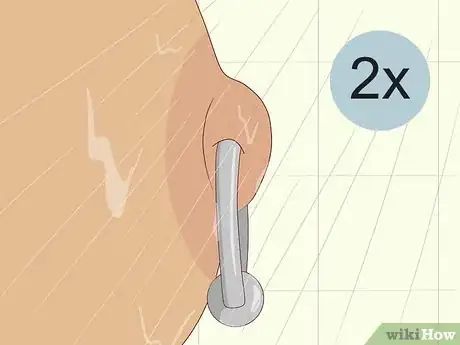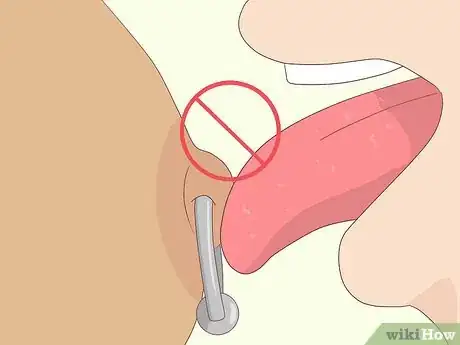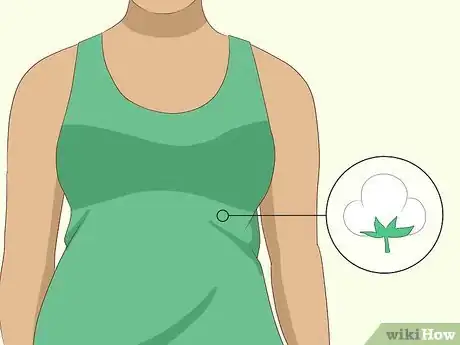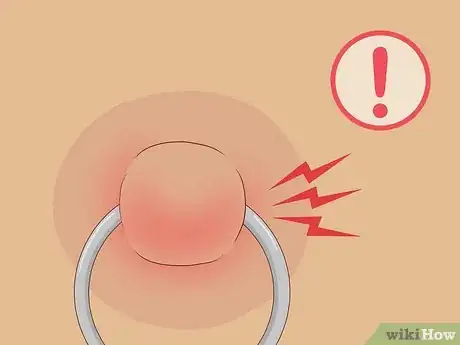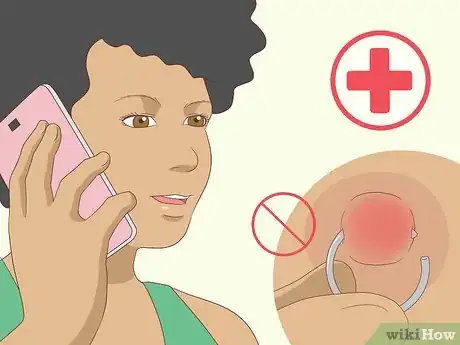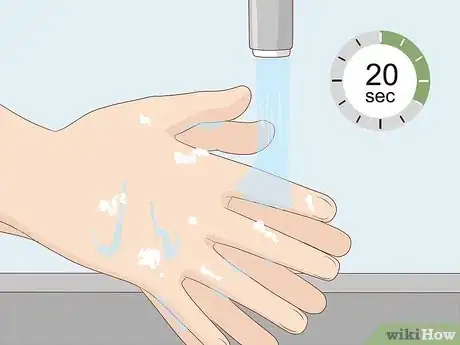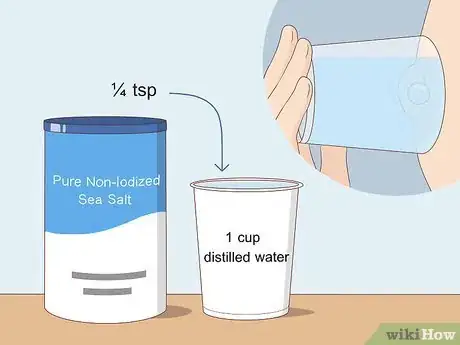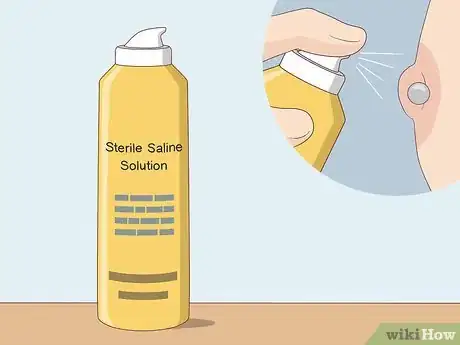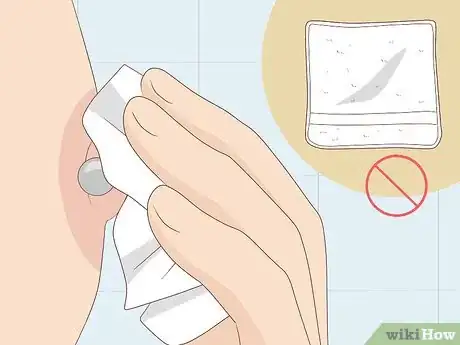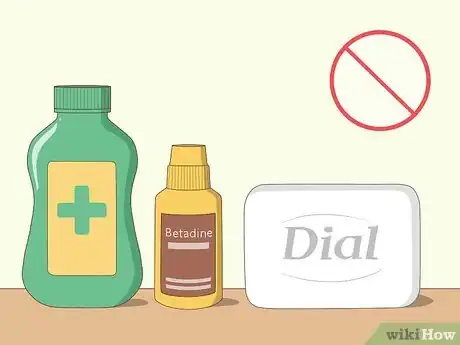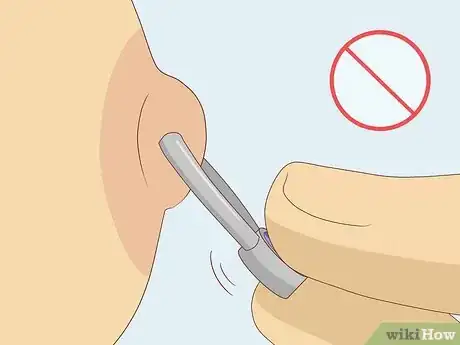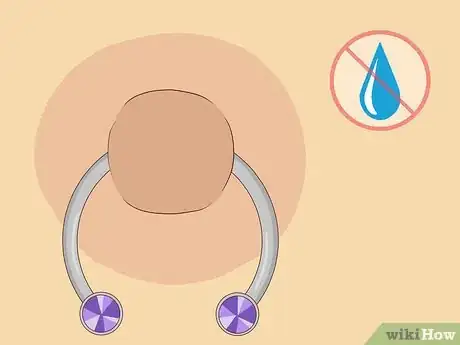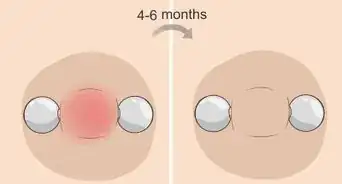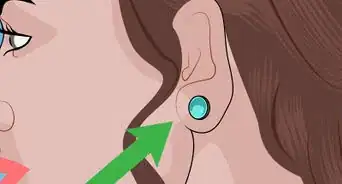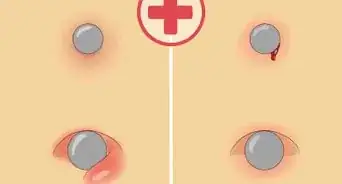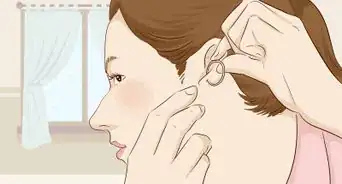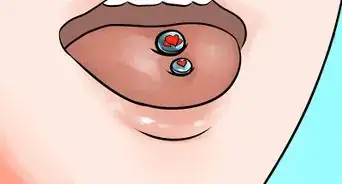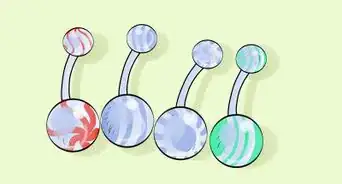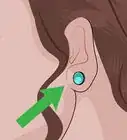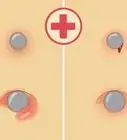This article was medically reviewed by Sarah Gehrke, RN, MS. Sarah Gehrke is a Registered Nurse and Licensed Massage Therapist in Texas. Sarah has over 10 years of experience teaching and practicing phlebotomy and intravenous (IV) therapy using physical, psychological, and emotional support. She received her Massage Therapist License from the Amarillo Massage Therapy Institute in 2008 and a M.S. in Nursing from the University of Phoenix in 2013.
There are 8 references cited in this article, which can be found at the bottom of the page.
wikiHow marks an article as reader-approved once it receives enough positive feedback. This article received 19 testimonials and 96% of readers who voted found it helpful, earning it our reader-approved status.
This article has been viewed 558,232 times.
A nipple piercing can be done for self-expression, increased sensitivity, or aesthetic reasons. Whatever your motivation is, a nipple piercing requires some attention and care. You must be particularly careful during the healing process. Cleaning can be tedious, but good aftercare is necessary and important if you want to maintain good health and avoid infection, irritation, or rejection.
Steps
Caring for a New Piercing
-
1Clean your piercing twice a day. Your piercing will take 3 to 6 months to heal. It may take longer than that if you do not care for it properly or if it becomes infected.[1]
- Only use a sterile solution or a salt water soak to clean your new piercing.
- If you over-clean your piercing or use harsh products, your piercing will become irritated and take longer to heal.[2]
-
2Do not take part in sexual activity that involves your nipple or piercing. Saliva may contain bacteria that can cause infection as well. These measures may seem extreme, but if your piercing becomes infected, you will have a much bigger problem on your hands with a much longer healing process. Take precautionary measures to heal your piercing and your body will thank you.
- In addition to saliva, any rough play, rubbing, or touching should be avoided as well.
-
3Wear clean, breathable fabrics. You will probably feel most comfortable in a generic sports bra (one not made for high impact sports), tank top, or shirt. Cotton is preferable since it is breathable and absorbs sweat, which decreases the ability for germs to harbor and cause infection.
- Wash and change your sheets once a week as well.
- Sleeping in a fitted sports bra or tank top will also keep you from snagging your piercing on your sheets or comforter.
-
4Know what is normal. While your piercing is healing, you may experience some discoloration and tightness around the jewelry. Your body will also secrete a whitish-yellow fluid, and you will see crust on your jewelry. All of this is normal. You still may have crusties after your piercing heals. The crust should easily wash away with warm water.
- Pay attention to the amount of discharge and crust that you have. This will help you gauge what is normal for you.
-
5Look out for infection. If you experience redness, unusual swelling, itching, burning, a rash, or pain that will not go away or subside, you may have an infection. If you do not have an infection, you may be sensitive to the cleaning products you are using or to the jewelry that is in your piercing.[3]
- Pay attention to your body, if you feel like something is not right, look into it.
- If you notice a bad odor, an increase in discharge, or your discharge changes color, you may have an infection as well.
-
6See a doctor or your piercer. Contact your piercer or your doctor if you have any signs of infection. If you think your piercing may be infected, do not remove the jewelry. Taking out the jewelry may not clear the infection automatically. Leave the jewelry in and wait for a consultation from a licensed piercer or doctor. [4]
Cleaning Your Nipple Piercing
-
1Wash your hands. Always wash your hands before you clean your piercing. Wet your hands, lather the soap, and scrub your hands together for at least 20 seconds. You can clean your hands with an alcohol-based hand sanitizer if you are unable to wash your hands with soap and water. However, hand sanitizer will not get your hands as clean.[6]
- If you do not wash your hands first, germs and bacteria from your hands can infect your piercing.
- You can hum the "Happy Birthday" song in your head twice instead of counting to 20.
-
2Clean your piercing in the shower. Lather up a small amount of soap in your hands and apply it to your piercing. Rinse all of the soap off of your piercing. Do not leave any suds or residue behind.[7]
- Use fragrance-free, dye-free soap. Stay away from harsh soaps that may irritate the skin around your piercing.[8]
- Do not apply the soap directly to your piercing and don't let the soap sit for more than 30 seconds.
- Do not use soap more than twice a day.
-
3Soak your piercing in a salt water solution. A salt water soak is the best way to clean your piercing. Mix 1/4 teaspoon of pure, non-iodized sea salt and 1 cup of distilled water in a clean glass. Bend over and place your nipple into the glass. Your nipple should be fully submerged in the water. Press the glass toward your body and try to create a suction effect or a tight seal so that the solution does not spill or leak. You can sit or stand while you do this.[9]
- Let your piercing soak for approximately 5-10 minutes or longer.
- Heat the water in the microwave before you soak your nipple. Do not burn your skin, but the warmer the water the better.
- Discard the solution from the glass once you are through.
- Soak your piercing twice a day or more often if it is not healing well.
- You can make a gallon of the solution and keep it in your refrigerator. Then just heat up the amount you need for each soak. If you are preparing a large batch, mix 4 teaspoons of salt with 1 gallon of distilled water.
- After 4 weeks, clean your piercing once every 2 or 3 days.
-
4Use a sterile saline solution. A pre-made sterile saline solution is the second best method for cleaning your piercing. Spray the solution on your nipple and completely cover your piercing. The solution does not need to be rinsed off.[10]
- The two most popular brands of sterile saline solution are H2Ocean and SteriWash.
- Do not spray the solution on a cotton ball or swab before applying. You need to apply the solution directly to your skin.
-
5
Avoiding Infections
-
1Do not clean your piercing with harsh chemicals. Avoid cleaning with Betadine, Hibiclens, Bactine, alcohol, hydrogen peroxide, Dial or other harsh soaps. Also avoid cleaners that contain Benzalkonium Chloride (BZK). You should also avoid ointments such as Neosporin, bacitracin, and other antibiotic ointments. These ointments contain petroleum jelly and will keep your piercings moist. A moist piercing attracts bacteria.[13]
- These cleaners and ointments will hurt the healing process and keep your piercing from getting oxygen.
- Also avoid getting any of your personal care products (e.g. lotion, shampoo, conditioner) on your piercing. If you are cleaning your piercing in the shower, clean it after you have washed your hair and used your other products.
-
2Do not mess with your piercing. It can be tempting to touch and play with your piercing, but you must avoid doing this. If your piercing is still healing, do not touch it unless you are cleaning it.[14] Do not rotate or twist the jewelry either.
-
3Keep your piercing dry. Dry your piercing as soon as you get out of the shower or finish cleaning it. Routinely change your clothing and do not leave sweaty, tight clothing on the piercing for long periods of time. Always use a clean, disposable item (e.g. paper towel, cotton ball, etc.) to dry your piercing. Towels may contain harmful bacteria.
- Do not submerge your piercing in a lake, pool, or hot tub. It is best to not go swimming until your piercing is fully healed.
- If you do go swimming, wear a waterproof bandage and clean your piercing as soon as you are finished.
References
- ↑ http://youngwomenshealth.org/2013/08/07/body-piercing/
- ↑ http://www.infinitebody.com/body_piercing_aftercare/basic-care/
- ↑ http://www.pamf.org/teen/health/bodyart/piercing.html#Signs of Infection
- ↑ http://www.pamf.org/teen/health/bodyart/piercing.html#Signs of Infection
- ↑ https://www.ncbi.nlm.nih.gov/pmc/articles/PMC1496593/
- ↑ http://www.cdc.gov/features/handwashing/
- ↑ http://youngwomenshealth.org/2013/08/07/body-piercing/
- ↑ http://www.infinitebody.com/body_piercing_aftercare/basic-care/
- ↑ http://www.infinitebody.com/body_piercing_aftercare/basic-care/
- ↑ http://www.infinitebody.com/body_piercing_aftercare/basic-care/
- ↑ https://uhs.berkeley.edu/health-topics/body-piercings
- ↑ https://www.liveabout.com/piercing-healing-to-rotate-or-not-3189296
- ↑ http://www.infinitebody.com/body_piercing_aftercare/basic-care/
- ↑ http://www.bodmod.net/acrobat%20files/afterc.pdf
About This Article
To care for a nipple piercing, start by cleaning it twice a day, since piercings typically take only 3 to 6 months to heal if cleaned properly. If you want to decrease your chances of infection, clean your new piercing with a sterile or salt water solution, and wear light, breathable fabrics like cotton, which absorb sweat, making it harder for germs to linger. However, be careful not to over-clean your piercing or it could become irritated and take longer to heal. You should also avoid taking part in any sexual activity that involves your nipple piercing, such as saliva, rough play, rubbing, or touching. Instead, focus on keeping good hygiene and resist the urge to touch your piercing, so it will heal faster and better in the long run. For more tips from our Medical co-author, including how to clean your piercing in the shower, keep reading!
